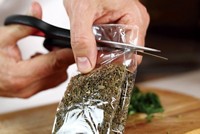Advertisement
Grab your lab coat. Let's get started
Welcome!
Welcome!
Create an account below to get 6 C&EN articles per month, receive newsletters and more - all free.
It seems this is your first time logging in online. Please enter the following information to continue.
As an ACS member you automatically get access to this site. All we need is few more details to create your reading experience.
Not you? Sign in with a different account.
Not you? Sign in with a different account.
ERROR 1
ERROR 1
ERROR 2
ERROR 2
ERROR 2
ERROR 2
ERROR 2
Password and Confirm password must match.
If you have an ACS member number, please enter it here so we can link this account to your membership. (optional)
ERROR 2
ACS values your privacy. By submitting your information, you are gaining access to C&EN and subscribing to our weekly newsletter. We use the information you provide to make your reading experience better, and we will never sell your data to third party members.
Environment
Plastic Fallout in the Oceans
Microscopic polymer bits are accumulating in marine environments
by Stephen K. Ritter
May 10, 2004
| A version of this story appeared in
Volume 82, Issue 19

A first-of-its-kind environmental survey has found that plastic debris around the globe can erode away and end up as microscopic granular or fiberlike fragments, and that these fragments have been steadily accumulating in the oceans [Science, 304, 838 (2004)]. The toxicity or other consequences of this buildup of plastic fragments are unknown.
A research team led by marine ecologist Richard C. Thompson of the University of Plymouth, in England, examined sediments from beaches and estuaries along England’s southwest coast. The team also examined water samples collected since the 1960s as part of a survey of plankton in the North Atlantic.
The scientists separated out brightly colored or unusual-looking microscopic bits from the samples and used infrared spectroscopy to identify nine polymers, including nylon, polyester, polyethylene, and polyvinyl alcohol. Lab experiments by the team have shown that barnacles, lugworms, and amphipods can ingest tiny plastic particles.
The fragments come from several sources, the researchers suggest. These include mechanical erosion of nondegradable plastic bottles and packaging, nondegradable parts of biodegradable plastics, and plastic pieces used as abrasives in cleaning agents.
The data from plankton samples indicate that the abundance of microscopic fragments has increased over time, with significantly more particles in samples after 1980. The increase corresponds to the growth in world production of synthetic polymers, Thompson notes. The researchers are working to establish the possible environmental impact of the newfound plastic debris, he says.
“Clearly, there is a challenge here to all of us to dispose of plastics properly and, wherever possible, to reuse or recycle plastic items,” Thompson tells C&EN.




Join the conversation
Contact the reporter
Submit a Letter to the Editor for publication
Engage with us on Twitter